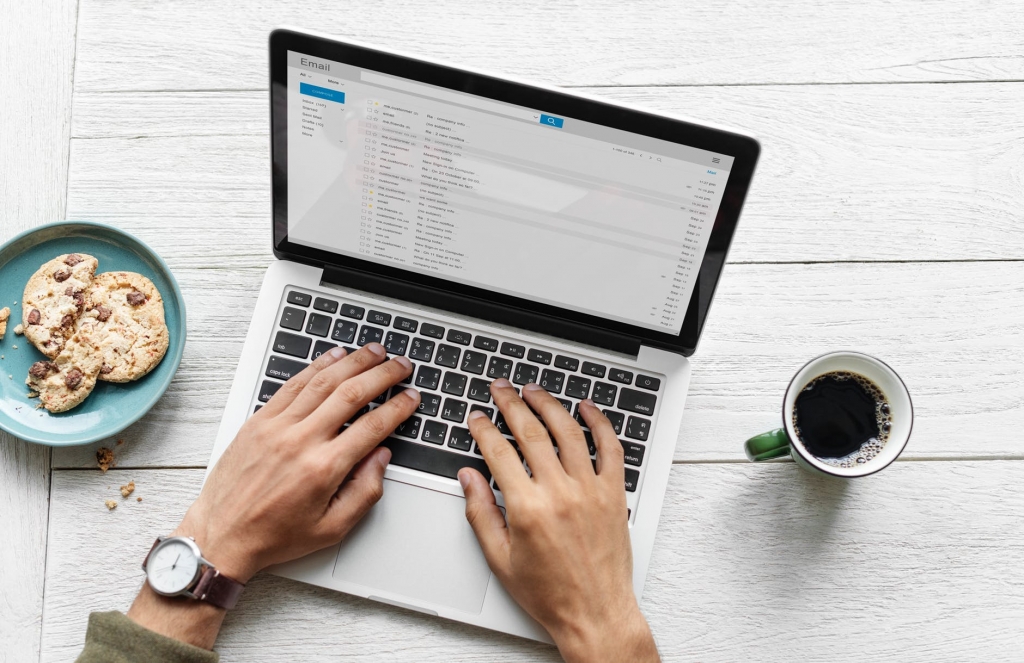With a recent report noting that 49% of consumers would like to receive email updates from brands, it is clear that email marketing for your restaurant cannot be ignored. As in all forms of communication, it is crucial to get email marketing done right and provide engaging content that will lead to more people dining at your restaurant.
Build your email list
The starting point of an email campaign is to get a list of people who would like to engage with your restaurant. The regulation does not allow you to send emails to people who have not signed up for receiving mail from you. You can get customers to sign up to your mailing list in a number of ways. When customers call to make reservations you could ask them for their email address. If you have an online reservation link on your website, you could include a request to sign up as part of the reservation process. As you write and publish articles whether on your blog or on other sites, include an invitation to sign up at the end of each article.
Remember to include an opt-out option, so that those who do not want to receive your emails may get removed from the mailing list.
Tailor your invitation
If you are collecting email subscribers through your website or blog, keep in mind that the reason they are at that particular page is that they are interested in that topic. Offer them an incentive to subscribe that is in line with their topic of interest. For instance, if your customers read an article about hosting events at your restaurant, you could invite them to sign up to receive updates on upcoming events.
Create effective landing pages
To effectively grow your email list, you should create landing pages designed to offer your clients an incentive to subscribe. Since you want to offer content tailored to the needs of your different customers, you may need to create several landing pages. These are different to your website’s homepage because they have a single call to action, designed to get subscribers.
In order to create effective landing pages, you can enlist the help of email marketing platforms such as Fishbowl, Unbounce and Mailchimp. They have easy to use templates that you can customize to reflect your restaurant’s brand and message. These landing pages can be used as the start of a campaign that will keep your customers updated with email notifications about your restaurant’s activities. Ultimately this marketing campaign should lead to an increase in bookings and sales.
Leverage digital media
After publishing your landing page, share the link across all the media platforms that you use. People who will agree to sign up to your mailing list are those interested in what you have to offer. The best place to find these people is on your social media pages. Regularly include content from your blog and newsletter with a call to action to subscribe. Since your followers already love your content, they will be more inclined to want to receive more information from your restaurant.
What to include
Your landing page should include an eye-catching headline that makes the reader want to know more. It has to tie into the link that they clicked on to get to the landing page. The information should be clear, concise and customers should not have to fish around the page to get what they are looking for.
Use brilliant photography of your interior and food to give customers a glimpse into your restaurant.
Call to action
Every landing should have a clear call to action (CTA). After engaging with the content on your landing page, the customer should be urged to take action. For your restaurant, this could be related to getting reservations, downloading your menu or enquiring about hosting an event. The CTA link should include a request for the customer to provide their email signature.
Emailing your Customers
Once you’ve built your list, you need to keep customers interested by emailing them quality content.
Just because people subscribe to your list does not mean they will read your emails. The subject of the email has to be interesting enough to prompt them to open the email. In addition, the email content has to be relevant to the clients’ interests.
Once again you should always include a CTA that will encourage customers to make reservations or further enquiry about your restaurant.
What you can share
You could notify customers of specials that you offer or new dishes that they should try. If you have a happy hour, remind your customers of this via email.
Restaurant chefs are usually looked up to and trusted by customers, so you could email periodic recipes or tips from your chef.
Let customers know of any new developments. For instance, if you decide to start offering vegan dishes to let customers know what they can expect.
Run promotions for special occasions and alert customers through email when certain events will be held at the restaurant. Depending on your type of restaurant you could have a screening of events such as sports or award shows. Provide an incentive for them viewing these at your restaurant by offering a discount on certain dishes.
Email marketing can be an effective tool for keeping customers updated on your business and gaining more reservations as well as enquiries for your restaurant. By providing engaging content tailored to the customer, you may be able to build a loyal client base thereby increasing your restaurant’s revenue.





